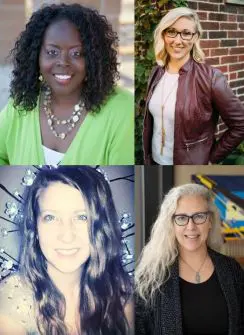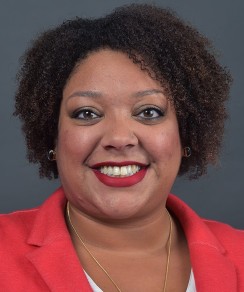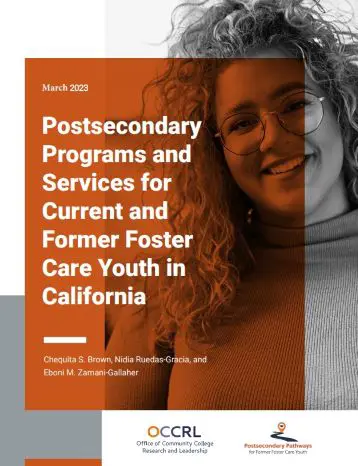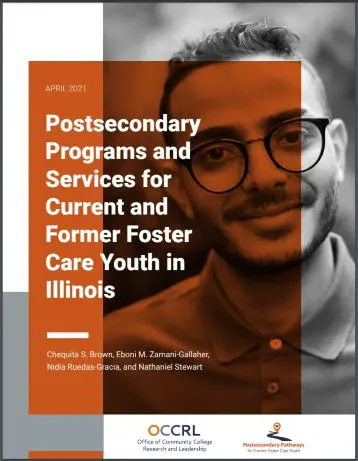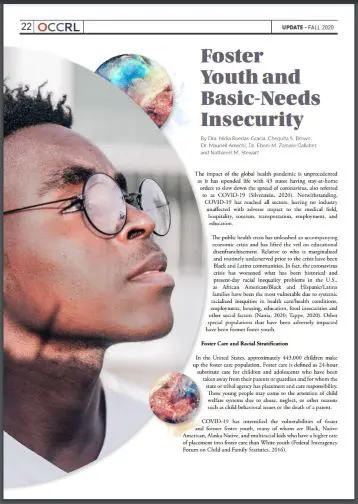In the U.S., individuals are legally viewed as adults in the eyes of the law at 18 years of age. This is also the age when the state decides that foster youth in this country are old enough to “age out” of the system and live on their own, emancipated and free to do as they please. The irony in this way of thinking is that this is the age—as youth begin to enter their college years—when a formal system of care designed to provide services is the most crucial.
With college being such a huge point in the lives of young adults, effectively shaping their future trajectory as adults and citizen in society, the foster youth population is at a huge disadvantage before it even gets a chance to enroll. Every year more than 23,000 children age out of the U.S. foster care system. According to the National Foster Youth Institute (2020), “After reaching the age of 18, 20% of the children who were in foster care will become instantly homeless.”
With their services being stripped away at 18, it can be tough to navigate such a new environment on one’s own. In January of this year, the Children’s Bureau (a division of the U.S. Department of Health and Human Services) began funding a multiphase grant program called Youth At-Risk of Homelessness (YARH) to build research on what works to prevent homelessness among youth and young adults in the child welfare system. YARH focuses on three populations: (1) adolescents who enter foster care from ages 14 to 17; (2) young adults aging out of foster care; and (3) homeless youth/young adults with foster care histories up to age 21 (Davis & Tucker, 2020).
The research of YARH discusses how two youth-at-risk-of-homelessness teams utilize a practice called continuous quality improvement to refine and improve their practices with foster youth. The program describes continuous quality improvement as a process of “enhancing the operation and performance” of a practice focused on youth in foster care through regularly collecting and analyzing data and identifying and testing change strategies (Davis & Tucker, 2020). This type of attention to detail is what is needed for such a population of youth to truly assess and identify components of a program that may need to be adjusted through intervention. The practice of continuous quality improvement was successful in helping both teams refine their intervention practices and improve their programs’ statistics on the foster youth they serve.
Research conducted by the Annie E. Casey Foundation calls for an extension of “high-quality, developmentally-appropriate services until age 21” (Annie E. Casey Foundation, 2013). Their work discusses the steep consequences faced by all Americans, not just foster youth, when children “age-out” of the foster care system without proper attention and care further into their adulthood years. Results revealed that, on average, taxpayers and communities pay $300,000 in social costs (equal to taxpayer-funded costs such as public assistance and incarceration, as well as costs absorbed by the community such as wages lost as a result of dropping out of high school) over the lifetime of every young person who ages out of the foster care system without proper support (Annie E. Casey Foundation, April 19, 2013).
Eighteen is the beginning of a crossroads for a lot of youth who are trying to figure out what they want to become.
All in all, we cannot afford to just forget about individuals in the foster youth population when they turn 18. Eighteen is the beginning of a crossroads for a lot of youth who are trying to figure out what they want to become. Practicing continuous quality improvement of wraparound support services and extending services until 21 years of age, will improve the outcomes of foster youth and foster care alum.
Resources
Aging out of foster care in America. (2013, April 19). Annie E. Casey Foundation.
Davis, L. Tucker, & L. P. (2020, January). Lessons from the Field: Using Continuous Quality Improvement to Refine Interventions for Youth at Risk of Homelessness. U.S. Department of Health & Human Services.
51 Useful aging out of foster care statistics. (2020, June 3). National Foster Youth Institute.
